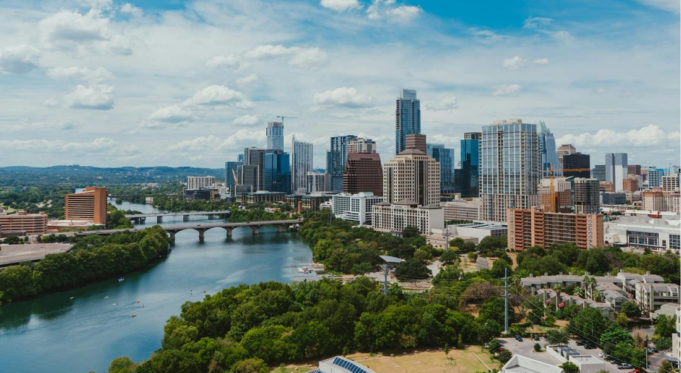Texas isn’t just a state—it’s a whole way of life. Over the past few years, families, professionals, and entrepreneurs alike have packed up their lives and set their sights on the Lone Star State. They’re chasing sunshine, lower taxes, job opportunities, and more space for less money. While Texas offers all that and more, it’s not without its surprises. People often arrive full of excitement but find themselves navigating a few unexpected challenges. So before you trade coasts, it’s worth taking a closer look at why people are relocating and what they wish they’d known.
1. The Housing Market Really Does Offer More for Less
Many who move to Texas can’t believe the square footage they get for the price. In cities like Dallas, San Antonio, or Fort Worth, you might score a three-bedroom home for what a studio costs in LA or NYC. Even with rising home prices, Texas still ranks below the national average in housing costs. Newer homes, larger yards, and affordable mortgage rates attract out-of-state buyers in droves. That said, competition can be fierce in the most desirable suburbs. Knowing which neighborhoods are expanding and which ones are saturated can make all the difference in your home search.
2. Moving Costs Vary—And Choosing the Right Company Matters
The physical move to Texas can be overwhelming, especially if you’re coming from thousands of miles away. Long-distance relocation isn’t just about loading boxes; it’s about planning, logistics, timing, and trust. That’s where services like the trusted Coleman long distance moving company become essential. They offer full-service moving packages and experience navigating cross-country moves, easing a stressful process. It’s worth investing in professionals who can protect your belongings and simplify the transition. After all, starting fresh in a new state is hard enough—your move shouldn’t add to the stress. Budget, but don’t cut corners here.
3. The Job Market Thrives, but It’s Still Competitive
Texas boasts one of the strongest job markets in the country. Industries like energy, tech, healthcare, and finance offer a wide range of opportunities. Cities such as Austin have become magnets for software developers, while Houston continues to dominate energy and engineering fields. Even so, job hunting isn’t always easy. Employers appreciate local experience and connections. That means networking matters, especially if you’re switching industries or moving without a position lined up. Building relationships through local meetups or professional groups gives newcomers a much-needed edge. Don’t assume a booming market equals instant employment.
4. Weather Surprises Even the Prepared
Yes, Texas is hot—but there’s more to the story. Summers scorch with high humidity, especially in eastern and southern parts of the state. Central and West Texas bring dry heat and dust storms. Winters can seem mild, but sudden cold snaps—sometimes with ice—throw off transplants. In 2021, many areas lost power during a rare winter storm. Weather also brings tornadoes in the north and hurricanes along the Gulf. Most residents adjust over time, but it’s smart to learn how homes handle weather before choosing where to live. Insulation, roofing, and flood zones suddenly matter more than you’d think.
5. Cultural Diversity Is Real, But So Is Culture Shock
Texas is more diverse than many expect. From Vietnamese communities in Houston to vibrant Mexican-American neighborhoods in San Antonio and thriving Black culture in Dallas, the state pulses with multicultural energy. That said, cultural norms vary by region. Rural areas lean conservative, while cities like Austin and Dallas embrace a more progressive vibe. This contrast can catch newcomers off guard. People from coastal cities might find the pace slower and conversations more direct. Others may feel instantly at home. Either way, open-mindedness helps. Understanding Texas culture—not just BBQ and football, but also values and communication—makes adjusting easier.
6. Traffic and Transportation Can Wear You Down
Most people don’t think of traffic when they picture wide Texas roads, but reality paints a different scene. In metro areas like Austin, Dallas, and Houston, traffic rivals that of major coastal cities. The infrastructure hasn’t caught up to the population boom, leaving drivers stuck during peak hours and struggling to find parking in city centers. Public transportation options remain limited compared to places like New York or Chicago. Commuters often spend hours on the road, even within short distances. Newcomers who relied on walking or subways in previous cities face a major adjustment—and sometimes need to buy a car just to get around efficiently.
7. Taxes May Surprise You
Texas proudly boasts zero state income tax, and that’s a huge draw for many families and professionals. However, the financial picture isn’t all roses. Property taxes are among the highest in the country, often catching new homeowners off guard. Combine that with homeowner association fees and rising home insurance costs—especially in areas prone to flooding or hail—and the cost of living can climb quickly. While Texas still offers overall affordability in many categories, anyone moving here should take a long look at local tax rates and long-term financial expectations. Skipping that homework leads to budget shock later.
8. Education Varies Wildly by District
If you’re moving with kids, or even planning to start a family, school quality becomes a major concern. Texas doesn’t have a one-size-fits-all education system. School performance varies significantly depending on the district, the city, and even the neighborhood. While some public schools offer excellent academics, extracurriculars, and facilities, others struggle with overcrowding, low test scores, or outdated programs. Private and charter schools are options, but often come with long waitlists or steep costs. Researching districts before buying a home becomes essential—because even a few blocks can mean the difference between a top-tier school and a struggling one.
Texas continues to draw people in with its promise of space, opportunity, and lifestyle upgrades. But it’s not just about chasing lower taxes or bigger homes. Moving here means adjusting to a whole new rhythm—one shaped by extreme weather, long commutes, and unique cultural dynamics. People who thrive in Texas don’t just show up; they prepare, adapt, and invest in the life they’re building. Before you pack those boxes and set your sights on the Lone Star State, make sure you know what’s waiting for you. A smoother transition starts with realistic expectations—and ends with a life you’ll love living.












